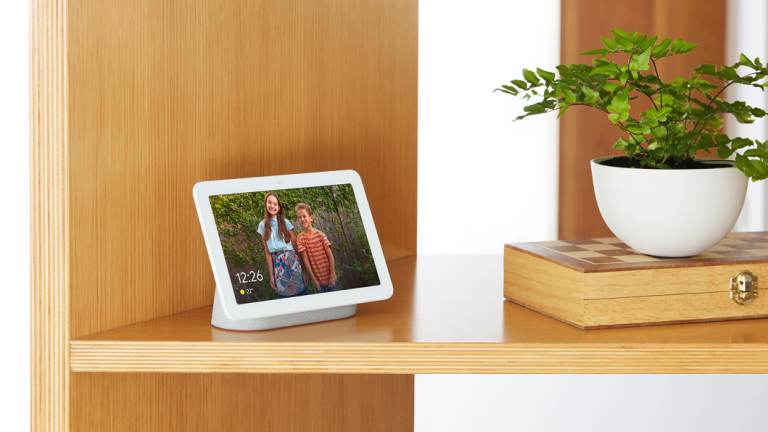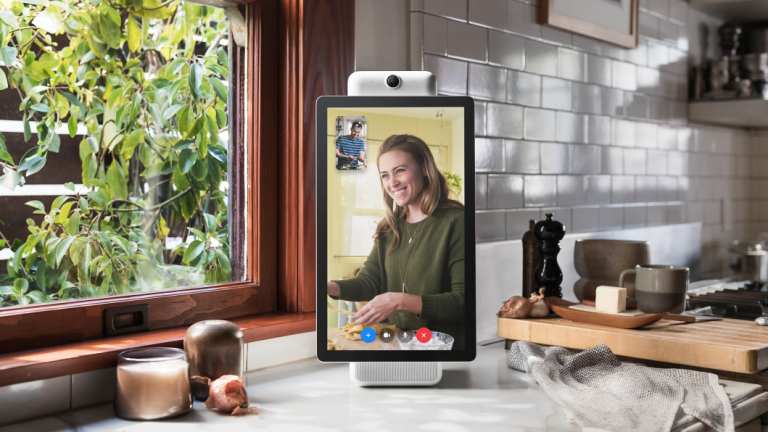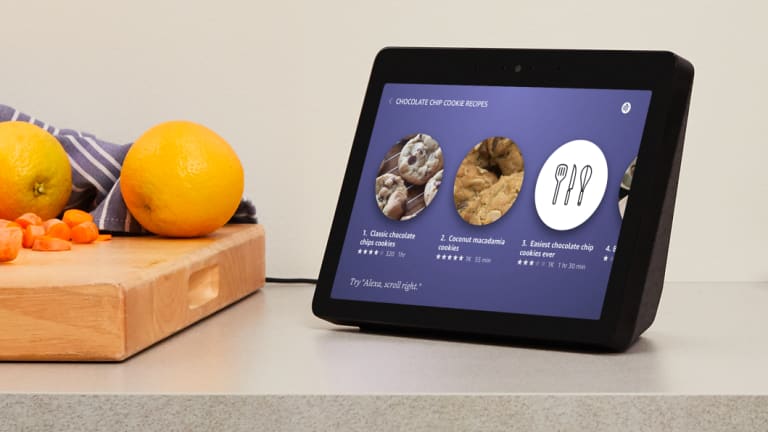
So why would you need a smart display? That's the challenge which faces the Amazon Echo Show and Google Home Hub, which are both coming to Australia this month, along with Facebook Portal which has just been announced for the US.

The Google Home Hub pulls images automatically from the user's online collection when it's not in use.
Google and Amazon's smart displays are basically a small tablet on a stout stand with half-decent speakers. They include a talkative smart assistant which can answer all your tricky questions, just like a smart speaker, but with the advantage of both showing and telling. For example information read out about your schedule, commute or weather report are also shown visually. The Home Hub can also show all your connected smart home devices on a single screen and let you toggle them.
Loading
Meanwhile, Facebook Portal is primarily a video phone with the benefit of Amazon's Alexa smart assistant. Amazon's own Echo Show also features a front camera for making video calls, while Google chose to forgo a camera in the Home Hub.
Asking people to install a smart camera in their homes is a big ask in an age of enhanced privacy concerns. Especially as the tech giants have a less than spotless record when it comes to security breaches, not to mention caving into requests from government agencies looking to keep an eye on things.
Thankfully it's possible to switch off the microphone and camera in these devices, with Facebook even including a clip-on camera shield, which should go some way to comfort those considering using a smart screen as a bedside alarm clock.

Facebook's Portal also comes in a larger version, called the Portal+.Credit:Facebook
Of course not everyone wants to lie in bed or stand around in the kitchen when making video calls.
Facebook's Portal features a zoom camera which can follow you around the room – not necessarily helping alleviate privacy fears. Even so, when you want to settle in for a video call it's easier if the camera comes to you, rather than you having to rest your smartphone or tablet on the coffee table while you relax on the couch.
There's more to a smart screen than video calls, and the next-best use seems to be flicking through recipes hands-free while you're cooking up a storm. Plus you can catch up on the news or watch a TV show while your carbonara sauce simmers, without having to actualy touch the screen. You'll see the appeal if your phone has even had a close encounter with a two tablespoons of flour and a cup of milk. The company's smart displays each rely on their own video apps for content (Prime, YouTube and Facebook Watch), but more services may be added.
One problem may be that if you need to position the device somewhere you can see it from the stovetop, you probably wouldn't be able to see it from anywhere else in the room; making it harder to justify the expense.

Amazon's Echo Show can display step-by-step recipes, as can Google's Home Hub.
Don't be surprised if the next generation of smart displays are designed to be wall-mounted, or even stuck on the front of your fridge, so they're up high and facing into the room for all to see.
Even then, most of the time you'll just call out to it rather than walk across the room to read the screen. It can scroll through your family photos when it sits idle, which kind of brings us back where we started. It's still early days, but it might take a while for smart home owners to figure out exactly how smart displays fit into the big picture.
Adam Turner is an award-winning Australian technology journalist and co-host of weekly podcast Vertical Hold: Behind The Tech News.









 Add Category
Add Category